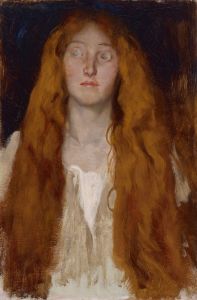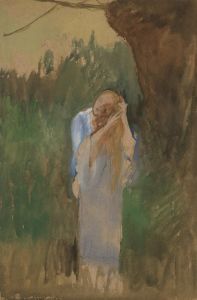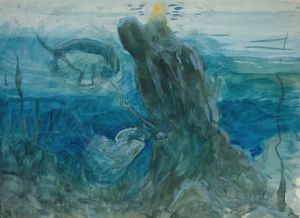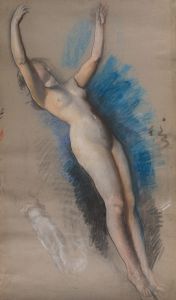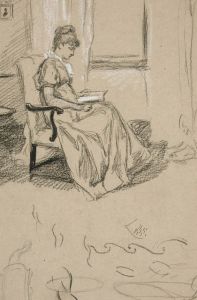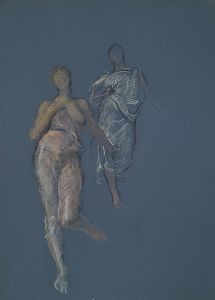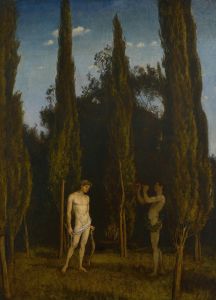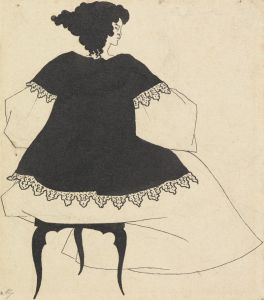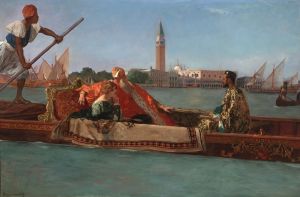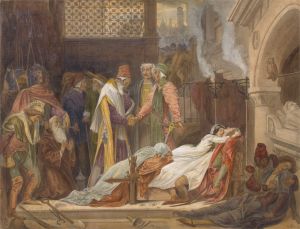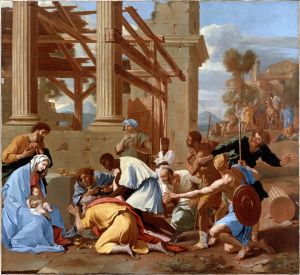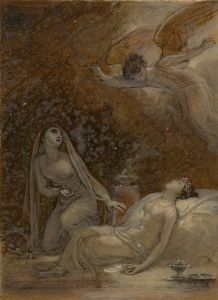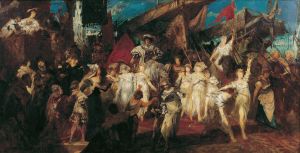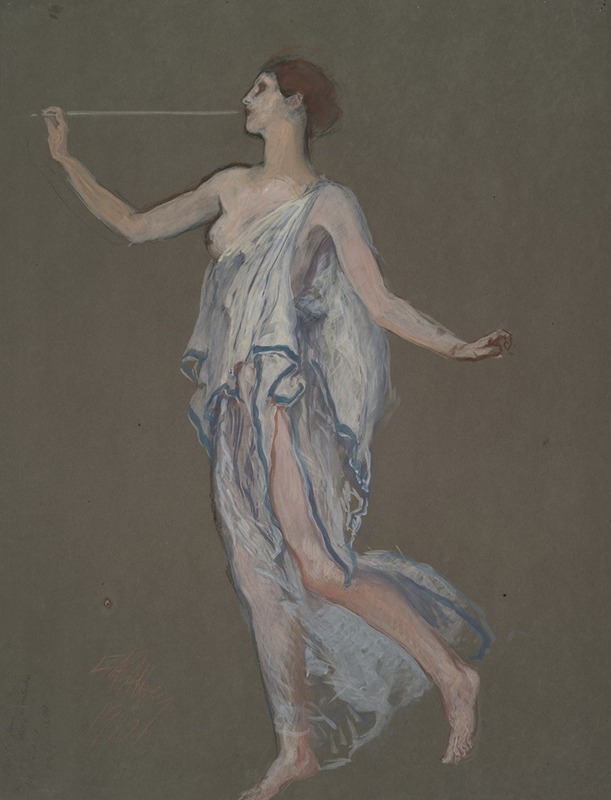
Figure study for the figure of Fame
A hand-painted replica of Edwin Austin Abbey’s masterpiece Figure study for the figure of Fame, meticulously crafted by professional artists to capture the true essence of the original. Each piece is created with museum-quality canvas and rare mineral pigments, carefully painted by experienced artists with delicate brushstrokes and rich, layered colors to perfectly recreate the texture of the original artwork. Unlike machine-printed reproductions, this hand-painted version brings the painting to life, infused with the artist’s emotions and skill in every stroke. Whether for personal collection or home decoration, it instantly elevates the artistic atmosphere of any space.
Edwin Austin Abbey was an American artist known for his work in both illustration and painting, particularly during the late 19th and early 20th centuries. One of his notable works is the "Figure Study for the Figure of Fame," which is a preparatory study for a larger piece. Abbey's work often involved detailed studies and sketches that would later contribute to his more comprehensive compositions, particularly in murals and large-scale paintings.
Abbey was born in 1852 in Philadelphia, Pennsylvania, and he began his artistic career as an illustrator for magazines such as Harper's Weekly. His work was characterized by a strong sense of narrative and historical accuracy, which made him a popular choice for illustrating classic literature and historical subjects. Abbey moved to England in 1878, where he became deeply influenced by the Pre-Raphaelite Brotherhood and the English school of painting, which is evident in his meticulous attention to detail and vibrant use of color.
The "Figure Study for the Figure of Fame" is part of Abbey's preparatory work for the Boston Public Library murals, a significant commission he received in the late 19th century. These murals, collectively known as "The Quest of the Holy Grail," were completed between 1890 and 1901 and are considered some of his most important works. The murals depict scenes from Arthurian legends, a subject that fascinated Abbey and allowed him to explore themes of chivalry, heroism, and myth.
The figure of Fame, as studied by Abbey, likely represents the allegorical personification of fame or renown, a common motif in art that symbolizes the enduring legacy of heroic deeds and the spread of one's reputation. In classical mythology, Fame is often depicted as a winged figure, sometimes with a trumpet, signifying the announcement of one's achievements to the world. Abbey's study would have focused on capturing the essence of this allegorical figure, experimenting with posture, drapery, and expression to convey the intended symbolism effectively.
Abbey's approach to figure studies was methodical and thorough. He would often produce numerous sketches and studies to refine his ideas before committing them to the final composition. This process allowed him to explore different artistic possibilities and ensure that each element of his murals was carefully considered and executed. His dedication to preparatory work is evident in the precision and detail of his final pieces, which have been praised for their narrative clarity and aesthetic beauty.
The "Figure Study for the Figure of Fame" exemplifies Abbey's skill in capturing the human form and his ability to imbue his subjects with a sense of life and movement. While the study itself is a smaller, more intimate work compared to the grand scale of the Boston Public Library murals, it provides valuable insight into Abbey's creative process and his commitment to artistic excellence.
Abbey's contributions to art, particularly in the realm of mural painting, have left a lasting impact on both American and British art. His works continue to be studied and admired for their technical skill, historical depth, and narrative power. The "Figure Study for the Figure of Fame" remains a testament to Abbey's artistic vision and his ability to bring mythological and historical themes to life through his art.





